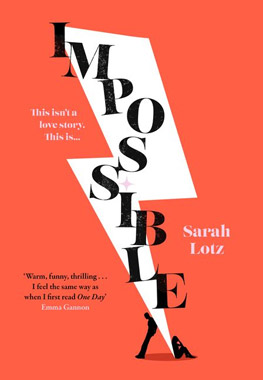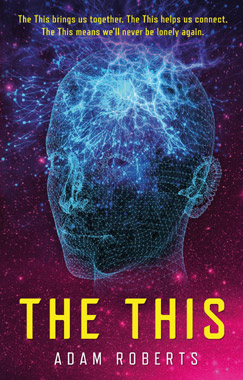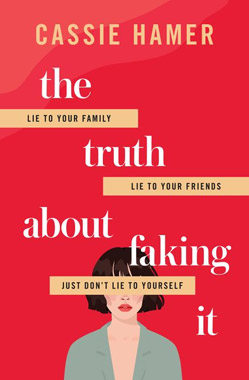Showing all posts tagged: fiction
Susanna Clarke’s Piranesi: an introvert on steroids?
27 May 2022

Detail from Imaginary Prisons, by Giovanni Battista Piranesi, courtesy of The Metropolitan Museum of Art.
Warning, spoilers follow. Return to this article once you’ve finished reading the book.
Imagine you live in a sprawling multi-storied house. The lower levels are flooded by an ocean, while the upper floors are shrouded in mist and clouds. The seemingly endless labyrinth like hallways are adorned with classical style marble statues, and for whatever reason, sea birds have taken to nesting among some of these figures. But it’s not really a house you’re in, it’s more like a complex with the dimensions of a city, and one none too small at that.
This is the world, Piranesi, the titular character in the second novel of British author Susanna Clarke (published by Bloomsbury Publishing, August 2021), finds himself in. Piranesi knows little about how the house came to be, or when he arrived there, although he has vague recollections of living elsewhere before. Come to that, Piranesi knows hardly anything about himself. He’s perhaps aged in his mid-thirties, and if pressed, couldn’t even be sure his name was Piranesi.
Despite these peculiar circumstances, Piranesi otherwise seems content, and goes about his day to day life as if nothing were amiss. But how would you feel were it you in Piranesi’s place? Wouldn’t you wonder how you ended up in this predicament, and whether there was a way leave, and return to the real world? Wouldn’t you miss family and friends, and wonder if they felt the same way? Wouldn’t you crave the company of others at least some of the time?
But Piranesi doesn’t appear to be the least bit perturbed. Why though? Does he have some sort of problem? Does he loathe all people, and is thankful for the sanctuary the house offers, a place devoid of humans? Or is he perhaps an introvert, who’s found his happy place? Yet Piranesi isn’t completely alone in the house. Once or twice a week, he goes to a certain area of the complex, where he briefly meets a middle-aged man, whom Piranesi refers to as The Other.
If Piranesi knows little about himself, he knows even less about The Other. He has no idea who this gentleman really is — although he believes him to be some sort of academic — nor does he know where The Other resides in the house. The Other meanwhile frequently questions Piranesi, and even sets him tasks, some relatively arduous. One such request required Piranesi to walk to a distant point in the house, on a journey lasting two days return.
To make a comparison, and better understand the scale of the house, I looked up the walking time and distance from Sydney’s CBD to the western suburb of Penrith on Google, and was advised the trek is approximately fifty-six kilometres in length, and the non-stop walk would take almost twelve hours.
Of course the question of exactly what sort of place Piranesi finds himself in came up repeatedly as I read the novel, particularly as he never encountered anyone else — at least not at first — in the sprawling complex. While plenty of Clarke’s readers (myself included) have ideas as to the nature of the house, and what it really is, I found myself wondering how Piranesi could remain oblivious to his acute isolation, and not miss the company of other people.
After all, surely not even the most extreme of introverts would continuously crave the deep solitude of the apparently empty house. But there were indications Piranesi was lonely. He regarded the sea birds nesting in the statues in some of the hallways as friends, and would often have conversations — albeit one-sided — with them. But when it becomes obvious another person is lurking, out of sight, in the house, Piranesi is keen to find out who they are.
In trying to understand Piranesi’s apparently people averse personality, I would describe him as an introvert. But no ordinary — if there is such a thing — introvert. To live alone for years in a vast complex, spending perhaps an hour at most, once a week, with one other person could not be anyone’s ideal. While it can argued something else is going on, that he is unaware of, Piranesi’s outright acceptance of his plight remains compelling. Piranesi is certainly an introvert, but he’s more, he’s an introvert on steroids.
RELATED CONTENT
fiction, introversion, novels, psychology, Susanna Clarke
Fictosexuals: people married to fictional characters
3 May 2022
Sometimes a book is just too good to put down, leaving you no choice but to… marry one of its (fictional) characters. Unofficially at least.
And no, this is no joke. The practice is said to have thousands of adherents in Japan, including Akihiko Kondo, a thirty-something salaryman, who is “married” to Hatsune Miku, a singing voice synthesizer, who features in video games, and even opened a concert for Lady Gaga once*.
In Miku, Mr. Kondo has found love, inspiration and solace, he says. He and his assortment of Miku dolls eat, sleep and watch movies together. Sometimes, they sneak off on romantic getaways, posting photos on Instagram.
*… though can someone who opened a show for Lady Gaga be unreal?
RELATED CONTENT
Again, Rachel, Marian Keyes
28 February 2022

Readers of Irish author Marian Keyes‘ Walsh Family Series of novels first made the acquaintance of Rachel Walsh in 1997, in Rachel’s Holiday. Rachel was twenty-seven, and not in a good place. She’d just broken up with her boyfriend, Luke, and had been placed in rehabilitation by her family on account of her substance abuse.
Fast forward to 2021, and Rachel’s world is a better place. In fact, she has come full circle. She now works as a councillor at the facility she was admitted to twenty-five years earlier. Further, she’s in a happy relationship, and is getting along nicely with her mother and siblings. All up, everything seems to be going exceedingly well for Rachel. But her reverie is shattered by an out of the blue call from an old flame, in Again, Rachel (published by Penguin Books Australia, February 2022).
Just when she thought she had everything sorted out, and was settled, Rachel finds her life turned on its head. What is she to do? Follow her heart, and her ex, and venture back into a time and place she thought she’d left behind? Or remain in the predictable now? How fragile, it seems, is the life we believed to be firmly established…
RELATED CONTENT
fiction, Marian Keyes, TBR list, writing
Impossible by Sarah Lotz
21 February 2022

What would you do if an email intended for another person, made its way to your inbox? Would you delete it forthwith? Or would you, without blinking at it, inform the sender by return, of their error? Or might you feel that’d be tantamount to admitting you’d read the message? Might you think you were therefore exposing yourself to possible retribution, by making yourself known to the sender?
Or might you be like Bee, a London dress maker, who having received, and read, an incorrectly addressed email, decides to send a considered reply to the sender, because she found the contents intriguing? And would you believe for a second that such a response could be the beginning of a friendship, or perhaps something more?
This is exactly what happens in Impossible (published by HarperCollins Publishers, March 2022), by Sarah Lotz, the eighth novel by the British novelist and screenwriter. Nick, who is struggling personally and professionally, is surprised when Bee, a stranger, replies to his misdirected rant, but is delighted as their correspondence becomes regular and more intimate.
After all, who doesn’t like a meeting a new friend? But when Bee and Nick realise there is more to their exchanges than cordial banter, they decide to take the next step. Nick jumps on a train from Leeds, while Bee makes her way to London’s Euston station to meet him. But is it that simple? Can something come of what they have? Could it? Or is there too much they don’t know about each other to make that possible?
RELATED CONTENT
fiction, Sarah Lotz, TBR list, writing
The This, Adam Roberts
16 February 2022

This sounds convenient. Instead of hauling a smartphone around all the time, you could instead have a social media platform injected into the roof of your mouth. The implant would mesh with your brain, eventually taking the place of your phone. Blink twice to take a photo maybe, communicate brain to brain with friends who also have the app implant.
Welcome to The This, the futurist social media app, and novel of the same name, written by British science fiction author Adam Roberts, published by Hachette Australia. The app is popular with many, but there are those who do not like it. They do not want to be part of the so-called hive mind. They’ve seen Twitter, they’ve seen enough. But the storyline has all the hallmarks of a hive mind, a sprawling, surreal, neural network spanning space and time.
Adan is a journalist, sent to profile the CEO of The This. But after Adan’s mother unexpectedly leaves the country, he is forced to join the army as he is left without a home or any money. Adan is battling a robot invasion, in a reality far removed from the one he once knew. In later centuries a diminished humanity is fighting off another hive mind, one intent of the final destruction of humanity. And all because we wanted to try out a new social media app…
RELATED CONTENT
Adam Roberts, fiction, TBR list, writing
The Very Last List of Vivian Walker, Megan Albany
12 February 2022

I couldn’t imagine how I’d feel if I were told I only had a certain amount of time left to live. It’s not the sort of situation most of us are used to dealing with. Our time, energy, and thought-output goes into dealing with all those other everyday predicaments. Paying the mortgage, getting the kids into the best school. Meeting the latest deadline. No pun intended.
But this is what happens to Vivian, the titular character of The Very Last List of Vivian Walker (published by Hachette Australia, 9 February 2022), the debut novel of Kalkadoon woman Megan Albany, an Australian author based in the Northern Rivers of NSW.
With her mortality hanging by a thread, Vivian does what any self-possessed control freak whose life is regimented by lists would; she decides to face her demise by organising herself. She prepares to-do lists not only for herself, but husband Clint, and son Ethan. These lists, she hopes, will soften the blow of her terminal diagnosis, and prepare the family for a future without her.
Vivian’s final days are punctuated with a certain dark humour, and one hopes not too many of us will ever find ourselves taking a leaf from the book of Vivian Walker.
RELATED CONTENT
fiction, Megan Albany, TBR list, writing
Ice Crash: Antarctica, Lynda Engler
11 February 2022

American science fiction author Kim Stanley Robinson is among writers who are hopeful fiction featuring climate change, and the consequences of global warming, will play a part in changing the perceptions of people who still don’t take the worldwide environmental crisis seriously.
For instance his latest novel, The Ministry for the Future, paints a bleak picture of a planet in deep trouble, but also presents a pathway through the turmoil, towards a positive future. Ice Crash: Antarctica (published by Amazon, February 15, 2022), by North Carolina based American author Lynda Engler, is another work of fiction taking on the topic of climate change, coupled with a series of devastating natural disasters.
Here, an earthquake in Antarctica pushes the Thwaites glacier, also known as the doomsday glacier into the ocean, bringing about a sudden and catastrophic rise in sea levels. Kathryn, a seismologist working in Antarctica, who has been alarmed by the unusual seismic activity, becomes trapped at McMurdo Station, by a succession of earthquakes.
Her husband and son meanwhile, who are in Boston, and her daughter who is in Florida, need to evacuate as sharply rising sea waters, and a series of tsunamis, bring devastation to the continental United States, and other nations around the globe.
RELATED CONTENT
fiction, Lynda Engler, TBR list, writing
The Truth about Faking It, Cassie Hamer
10 February 2022

The first rule of lying is not be caught out. But to lie frequently, or compulsively, means you either need to have a good memory, or hope that no one ever uncovers the truth. And webs of deceit are at the heart of The Truth about Faking It (published by HarperCollins Publishers, May 2022), the third novel by Sydney based Australian author Cassie Hamer.
Lies run through Ellen’s family. Her daughter Natasha, a composed television news reader, and grand-daughter Georgie, the producer of a reality TV show, are accomplished at concealing the truth, and their feelings. Ellen isn’t half bad either. Despite being married to David, she has been seeing the well-off Kenneth, on the side. But when the accident prone David dies in a boating accident in Thailand, having travelled there with his elusive and seldom heard of brother, Ellen, Natasha, and Georgie, smell a rat.
Something is not quite right about the whole affair, and the three women decide to delve further into the circumstances surrounding David’s demise. But in doing so, in exposing the truth of what happened to David, they risk lifting the lid on their own sordid lies and deceptions. Oh what a tangled web we weave, when first we practice to deceive…
RELATED CONTENT
Cassie Hamer, fiction, TBR list, writing
Cooper Not Out, by Justin Smith
1 February 2022

It’s a funny old game cricket, some days a player’s skill sees them soar to heights not seen before, other day’s fortune roundly turns on even the best. Then there’s Roy Cooper, a police sergeant who’s been a member of the rural Australian Penguin Hill Cricket Club for years. He’s never scored a century, nor for that matter, gone much passed double figures.
Nor has he ever taken a wicket, let alone a hat-trick, or a ten wicket haul. But as local schoolgirl Cassie Midwinter discovers, Roy has a claim to fame, one seemingly overlooked by the statistics mad doyens of the game: he has not once been dismissed while playing. After decades at the crease, Roy has never been bowled, stumped, caught, nor run-out.
It is a feat Cassie brings to the attention of a renowned cricket writer known as Don Garrett, who thinks the national men’s cricket team could benefit from Roy’s talents. Australia are being trounced by the West Indies in the 1984 summer test series, and Don sets about bringing Roy’s achievement to the notice of the team selectors, in Cooper Not Out (published by Penguin Books Australia, 18 January 2022), by Melbourne based writer and journalist Justin Smith.
Will the unthinkable happen? Will a life-long club player find himself pacing onto the pitch at the Melbourne Cricket Ground, in a bid to reverse the fortunes of the men’s test team? It might seem like a pipe dream, but as they say, it’s a funny old game. But Roy isn’t the only one with unnoticed accomplishments, and there’s much more to Don, the sports writer, than meets the eye.
RELATED CONTENT
fiction, Justin Smith, TBR list, writing
Colm Tóibín appointed as Irish fiction laureate
28 January 2022
Irish novelist and writer Colm Tóibín has been named the new laureate for Irish fiction, a role intended to encourage readers to engage with high quality fiction.
The three-year role is intended to “acknowledge the contribution of fiction writers to Irish artistic and cultural life”, as well as to encourage new writers, and engagement with “high quality Irish fiction”.
RELATED CONTENT
